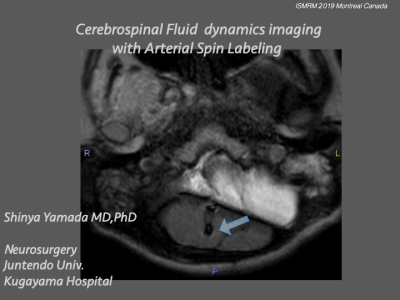Idiopathic Normal Pressure Hydrocephalus: The Role of MRI
Idiopathic Normal Pressure Hydrocephalus: The Role of MRI
Weekday Course
Weekday Course
ORGANIZERS: Elna-Marie Larsson, Pia Maly Sundgren
Monday, 13 May 2019
| Room 516C-E | 13:45 - 15:45 | Moderators: Elna-Marie Larsson, Karin Markenroth Bloch |
Skill Level: Intermediate to Advanced
Session Number: M-06
Overview
This session will focus on how MRI, including physiological methods, can contribute to the understanding, diagnosis, and treatment follow-up of idiopathic normal pressure hydrocephalus (iNPH).
Target Audience
Trainees, radiologists, physicists, and basic scientists.
Educational Objectives
As a result of attending this course, participants should be able to:
- Identify the MRI criteria supporting the diagnosis of iNPH 2;
- Recognise the CSF flow abnormalities in iNPH and how they can be investigated by MRI 3;
- Describe the role of aqueductal and glymphatic CSF dynamics in iNPH 4; and
- Discuss the role of MRI for patient selection for shunt surgery and for treatment follow-up in iNPH.
Overview
This session will focus on how MRI, including physiological methods, can contribute to the understanding, diagnosis, and treatment follow-up of idiopathic normal pressure hydrocephalus (iNPH).
Target Audience
Trainees, radiologists, physicists, and basic scientists.
Educational Objectives
As a result of attending this course, participants should be able to:
- Identify the MRI criteria supporting the diagnosis of iNPH 2;
- Recognise the CSF flow abnormalities in iNPH and how they can be investigated by MRI 3;
- Describe the role of aqueductal and glymphatic CSF dynamics in iNPH 4; and
- Discuss the role of MRI for patient selection for shunt surgery and for treatment follow-up in iNPH.
| 13:45 |
Idiopathic Normal Pressure Hydrocephalus: Definition & Imaging
Ari Blitz
During this presentation we will review the imaging features of adult hydrocephalus and the current limitations in our ability to provide diagnostic and prognostic information for this disease process.
|
|
| 14:15 |
MRI for Selection of Patients for Shunt Surgery & Follow-up
Karin Kockum
Brain MRI has a key role in the diagnosis of idiopathic Normal Pressure Hydrocephalus and is supportive in the selection of shunt candidates. This course will present an overview of the diagnostic and prognostic value of imaging features. A systematic approach to imaging evaluation and structured reporting of the findings enables comparison between sites and longitudinal follow-up of patients.
|
|
| 14:45 |
Aqueductal Flow in iNPH
Karin Markenroth Bloch
Idipathic Normal Pressure Hydrocephalus (iNPH) is a debilitating diesease without known cause. The symptoms are similar to those of vascular dementia, Alzheimers disease (AD) and Parkinsons (PD), making it difficult to diagnose. iNPH can be surgically treated with good results in at least a subset of patients, making a correct diagnosis crucial to the patient. Quantitative flow measurements of the cerebrospinal fluid (CSF) through the cerebral aqueduct has been suggested as a means of supporting the diagnosis of iNPH, differentiating it from AD or other forms of dementia, and for predicting outcome of ventriculoperitoneal shunting.
|
|
| 15:15 |
 |
CSF dynamics Imaging with ASL
Shinya Yamada
I will talk about Cerebrospinal fluid dynamics observation using MRI arterial spin labeling (ASL) technique in normal brain and it’s alteration in hydrocephalic brain. Observation of CSF flow by ASL is quite different from that is described in the textbook.
|
| 15:45 |
Adjournment |
 Back to Program-at-a-Glance |
Back to Program-at-a-Glance |  Back to Top
Back to Top